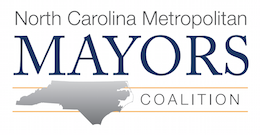NCDOT Sec. Conti Writes about the Charlotte Loop Impact on the Triangle Expressway
Dear Mayor Weatherly:
Your questions to Ed Johnson of CAMPO about the I-485 project in Charlotte came to my attention. I would like to offer some perspective on your comparison to the Triangle Expressway.
The two projects are similar in that they both reflect the challenges of trying to fund our major infrastructure needs, particularly urban loops, with limited resources now even more drastically constrained by the economic decline. Those conditions have forced us to come up with innovative approaches tailored to each of the two projects.
In the case of the Triangle Expressway, the solution arrived at – in collaboration with CAMPO – was to use tolling, a first in the state’s modern history. That approach enables the project to be moved up by as much as a decade. In the Charlotte situation, we are able to use the design/build/finance tool – also a first in the state – to accelerate the project by five years.
Let me make some other observations that frame the comparison differently:
1. The Triangle Expressway is a $1 billion project covering 18.8 miles, while completion of I-485 is a $340 million project covering five miles. TriEx required a much larger source of revenue, in this case tolling.
2. In addition to the toll funding, Triangle Expressway also benefits from a new infusion of state dollars: $25 million a year in gap funding, over 30 years.
3. The Charlotte area also is entering into the tolling arena to finance two other major projects, the $777 million Monroe Parkway southeast of Charlotte, and the $911 million Garden Parkway from Charlotte to Gastonia. Both are, like the Triangle Expressway, projects of the NC Turnpike Authority.
We think the Triangle community and CAMPO made a wise decision to choose the tolling mechanism to finance part of its loop, and we look forward to working with you and the other communities in Wake County to serve the area’s transportation needs.
Sincerely,
Gene Conti
Secretary of Transportation


